Abstract
It is suggested that guinea-pigs produce three different homocytotropic antibodies that can be distinguished by their physicochemical and biological properties. One has the properties of an IgG antibody, is heat and mercaptoethanol resistant and persists in the passively sensitized skin for not more than 72 hours. The other has the properties of an IgE antibody, is heat and mercaptoethanol labile and persists in the passively sensitized skin for at least 20 days. The third antibody is heat stable and mercaptoethanol labile and persists in the passively sensitized skin for more than 72 hours but less than 1 week. This antibody was partially separated from γ1 antibody by chromatography on DEAE cellulose and may represent a distinct segment of the γ1 antibody population. All three antibodies were able to sensitize guinea-pig mast cells and cause degranulation of these cells on reaction with antigen. Antihistamines produced complete inhibition of PCA reactions induced with all three types of antibodies but were much less efficient in inhibition PCA reactions induced with γ1 antibody obtained from hyperimmune serum.
Full text
PDF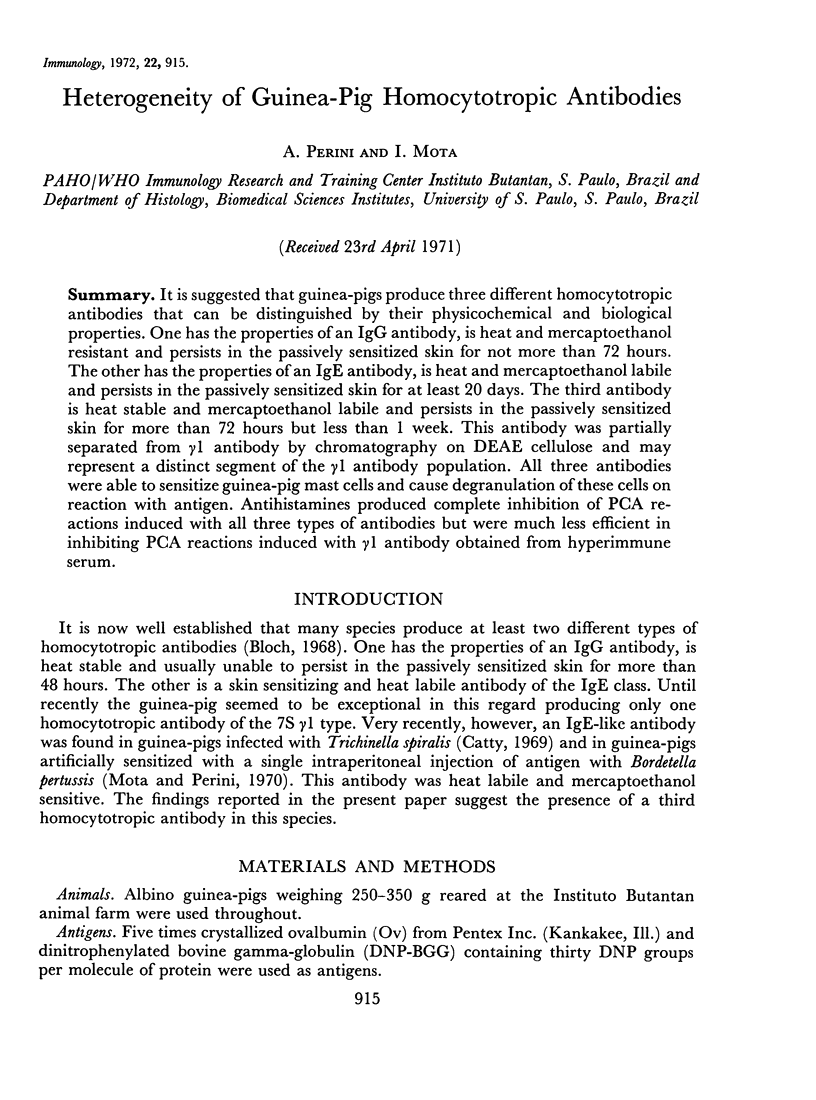


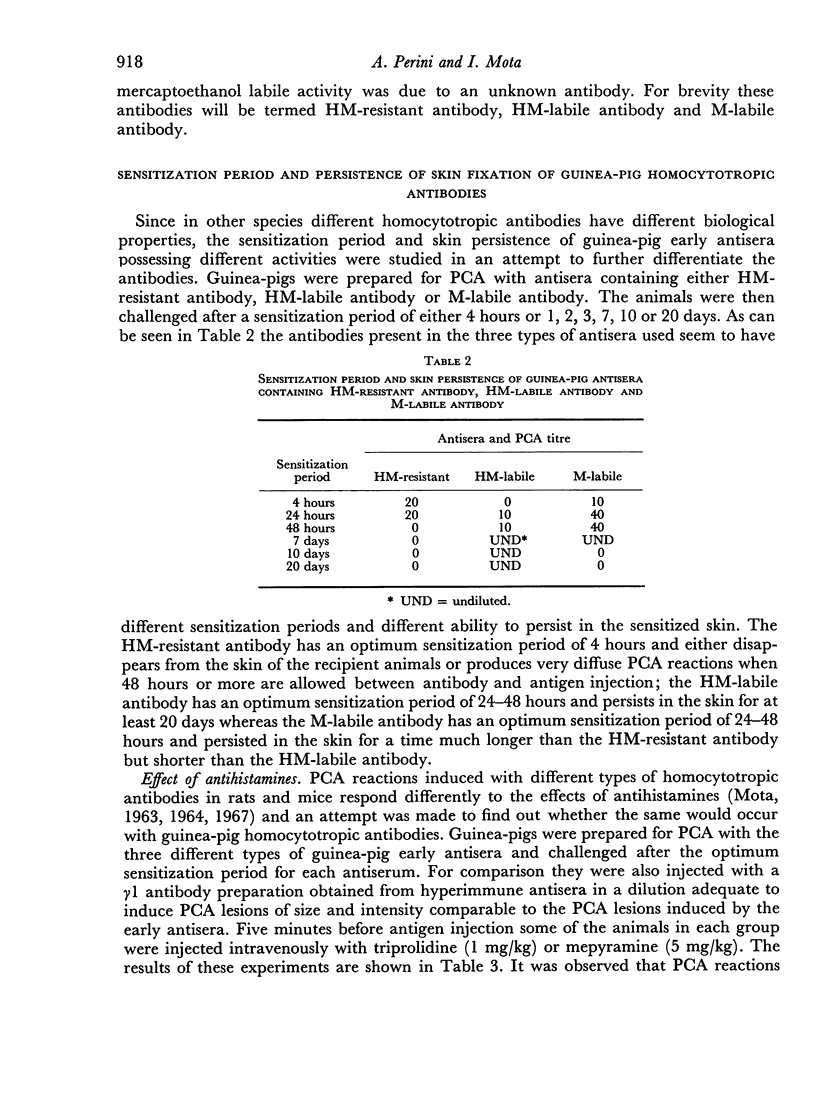

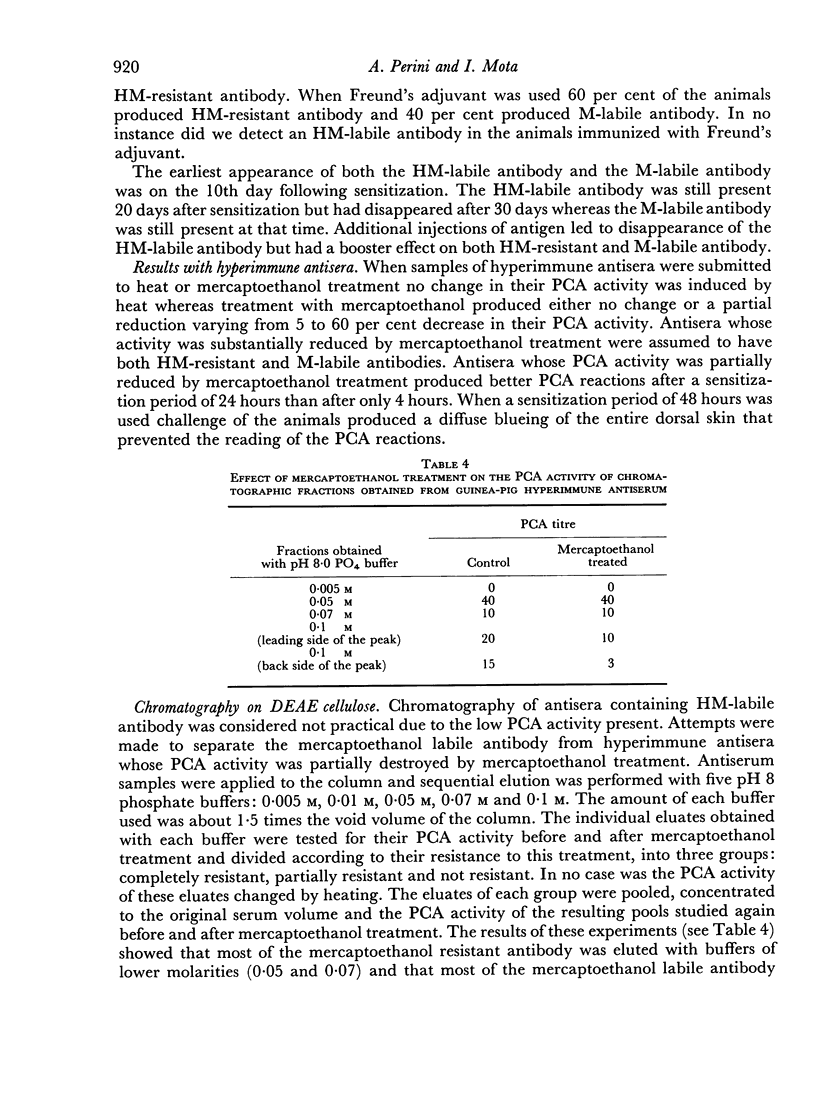
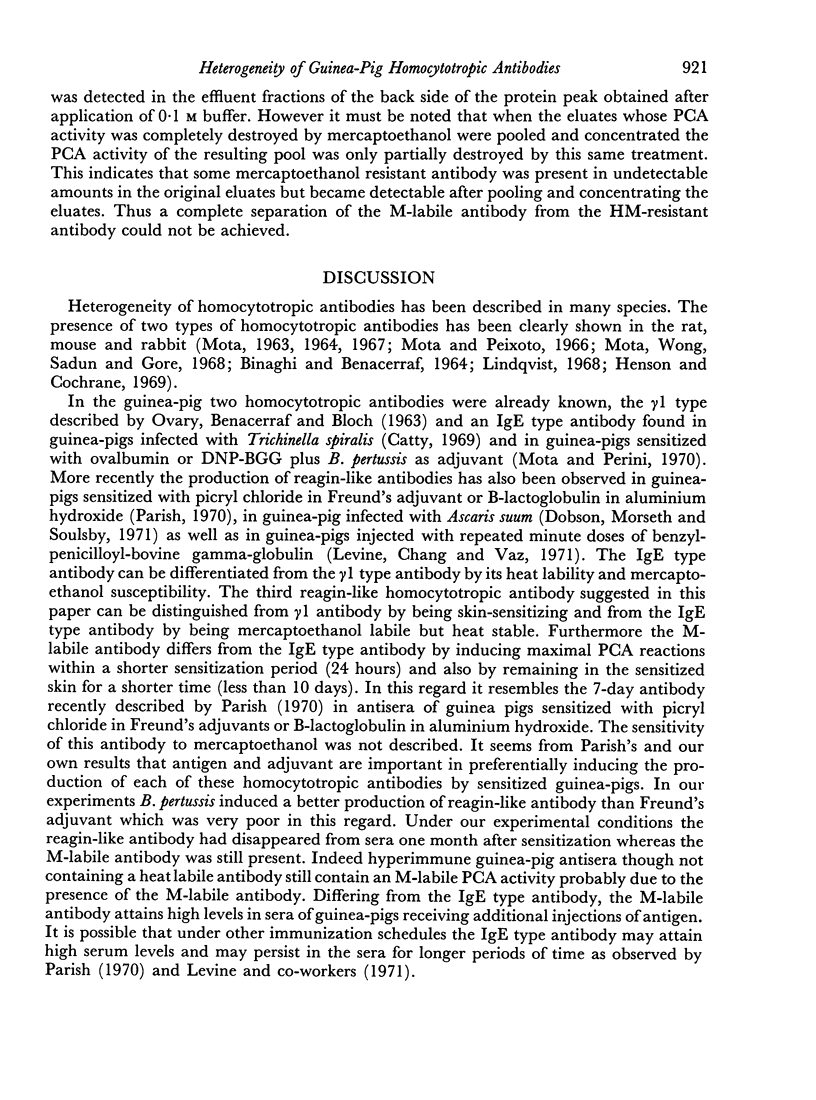
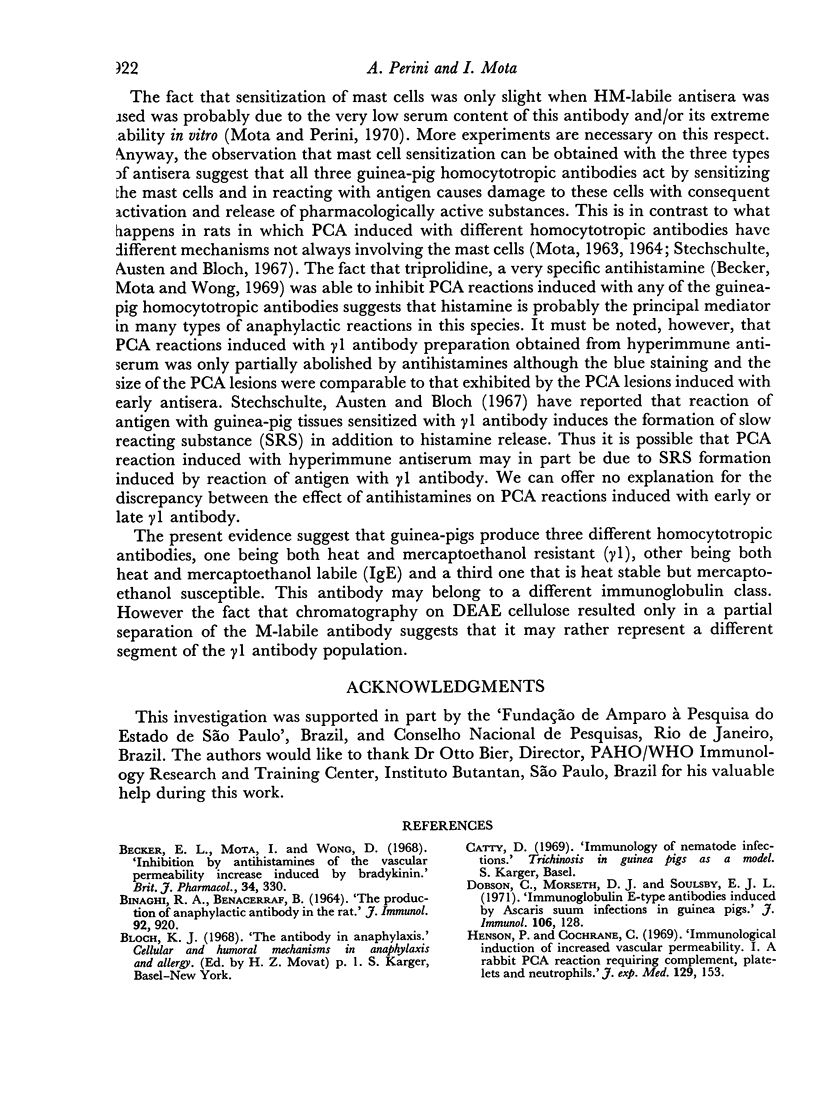
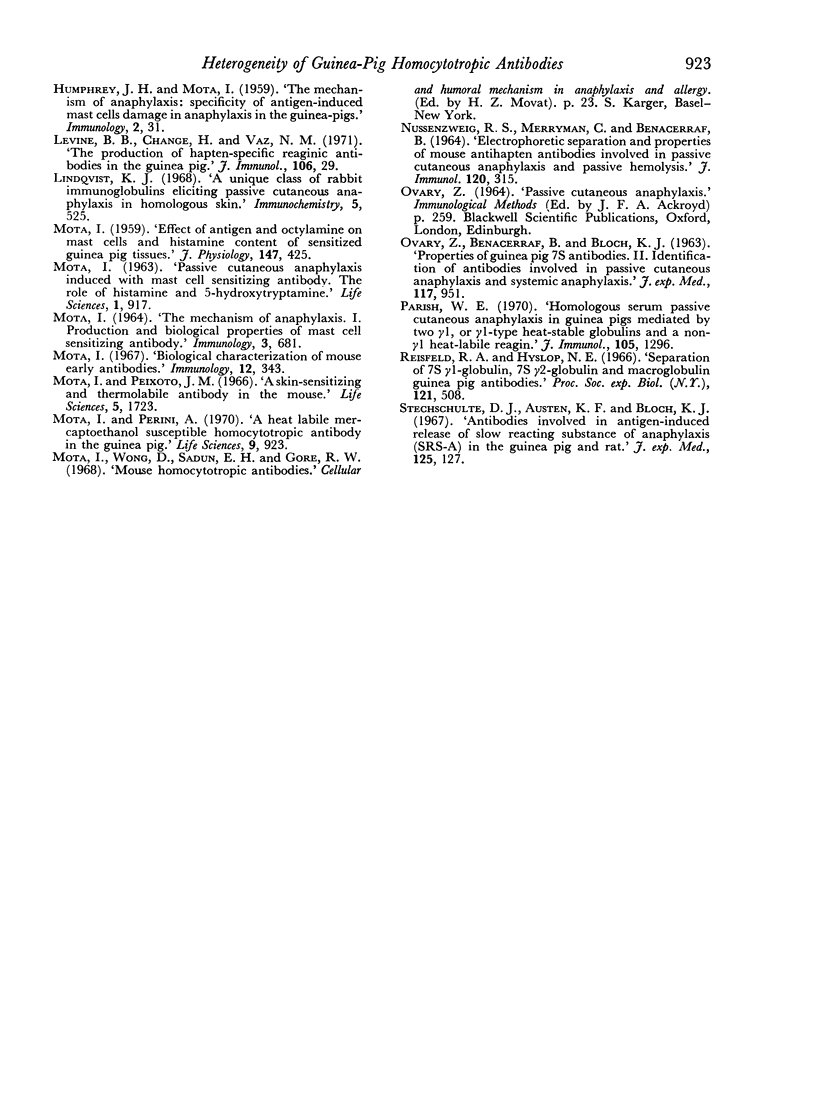
Selected References
These references are in PubMed. This may not be the complete list of references from this article.
- BINAGHI R. A., BENACERRAF B. THE PRODUCTION OF ANAPHYLACTIC ANTIBODY IN THE RAT. J Immunol. 1964 Jun;92:920–926. [PubMed] [Google Scholar]
- Becker E. L., Mota I., Wong D. Inhibition by antihistamines of the vascular permeability increase induced by bradykinin. Br J Pharmacol. 1968 Oct;34(2):330–336. doi: 10.1111/j.1476-5381.1968.tb07054.x. [DOI] [PMC free article] [PubMed] [Google Scholar]
- Dobson C., Morseth D. J., Soulsby J. L. Immunoglobulin E-type antibodies induced by Ascaris suum infections in guinea pigs. J Immunol. 1971 Jan;106(1):128–133. [PubMed] [Google Scholar]
- HUMPHREY J. H., MOTA I. The mechanism of anaphylaxis: specificity of antigen-induced mast cell damage in anaphylaxis in the guinea pig. Immunology. 1959 Jan;2(1):31–43. [PMC free article] [PubMed] [Google Scholar]
- Henson P. M., Cochrane C. G. Immunological induction of increased vascular permeability. I. A rabbit passive cutaneous anaphylactic reaction requiring complement, platelets, and neutrophils. J Exp Med. 1969 Jan 1;129(1):153–165. doi: 10.1084/jem.129.1.153. [DOI] [PMC free article] [PubMed] [Google Scholar]
- Levine B. B., Chang H., Jr, Vaz N. M. The production of hapten-specific reaginic antibodies in the guinea pig. J Immunol. 1971 Jan;106(1):29–33. [PubMed] [Google Scholar]
- Lindqvist K. J. A unique class of rabbit immunoglobulins eliciting passive cutaneous anaphylaxis in homologous skin. Immunochemistry. 1968 Nov;5(6):525–542. doi: 10.1016/0019-2791(68)90089-x. [DOI] [PubMed] [Google Scholar]
- MOTA I. Effect of antigen and octylamine on mast cells and histamine content of sensitized guinea-pig tissues. J Physiol. 1959 Oct;147:425–436. doi: 10.1113/jphysiol.1959.sp006253. [DOI] [PMC free article] [PubMed] [Google Scholar]
- MOTA I. PASSIVE CUTANEOUS ANAPHYLAXIS INDUCED WITH MAST CELL-SENSITIZING ANTIBODY. THE ROLE OF HISTAMINE AND 5-HYDROXYTRYPTAMINE. Life Sci. 1963 Dec;12:917–927. doi: 10.1016/0024-3205(63)90060-2. [DOI] [PubMed] [Google Scholar]
- MOTA I. THE MECHANISM OF ANAPHYLAXIS. I. PRODUCTION AND BIOLOGICAL PROPERTIES OF 'MAST CELL SENSITIZING' ANTIBODY. Immunology. 1964 Nov;7:681–699. [PMC free article] [PubMed] [Google Scholar]
- Mota I. Biological characterization of mouse 'early' antibodies. Immunology. 1967 Mar;12(3):343–348. [PMC free article] [PubMed] [Google Scholar]
- Mota I., Peixoto J. M. A skin-sensitizing and thermolabile antibody in the mouse. Life Sci. 1966 Sep;5(18):1723–1728. doi: 10.1016/0024-3205(66)90108-1. [DOI] [PubMed] [Google Scholar]
- Mota I., Perini A. A heat labile mercaptoethanol susceptible homocytotropic antibody in the guinea pig. Life Sci II. 1970 Aug 22;9(16):923–930. doi: 10.1016/0024-3205(70)90063-9. [DOI] [PubMed] [Google Scholar]
- NUSSENZWEIG R. S., MERRYMAN C., BENACERRAF B. ELECTROPHORETIC SEPARATION AND PROPERTIES OF MOUSE ANTIHAPTEN ANTIBODIES INVOLVED IN PASSIVE CUTANEOUS ANAPHYLAXIS AND PASSIVE HEMOLYSIS. J Exp Med. 1964 Aug 1;120:315–328. doi: 10.1084/jem.120.2.315. [DOI] [PMC free article] [PubMed] [Google Scholar]
- OVARY Z., BENACERRAF B., BLOCH K. J. Properties of guinea pig 7S antibodies. II. Identification of antibodies involved in passive cutaneous and systemic anaphylaxis. J Exp Med. 1963 Jun 1;117:951–964. doi: 10.1084/jem.117.6.951. [DOI] [PMC free article] [PubMed] [Google Scholar]
- Parish W. E. Homologous serum passive cutaneous anaphylaxis in guinea pigs mediated by two gamma-1 or gamma-1-type heat-stable globulins and a non-gamma-1 heat-labile reagin. J Immunol. 1970 Nov;105(5):1296–1298. [PubMed] [Google Scholar]
- Reisfeld R. A., Hyslop N. E. Separation of 7S gamma-1-globulin, 7S gamma-2-globulin and macroglobulin guinea pig antibodies. Proc Soc Exp Biol Med. 1966 Feb;121(2):508–514. doi: 10.3181/00379727-121-30817. [DOI] [PubMed] [Google Scholar]
- Stechschulte D. J., Austen K. F., Bloch K. J. Antibodies involved in antigen-induced release of slow reacting substance of anaphylaxis (SRS-A) in the guinea pig and rat. J Exp Med. 1967 Jan 1;125(1):127–147. doi: 10.1084/jem.125.1.127. [DOI] [PMC free article] [PubMed] [Google Scholar]


